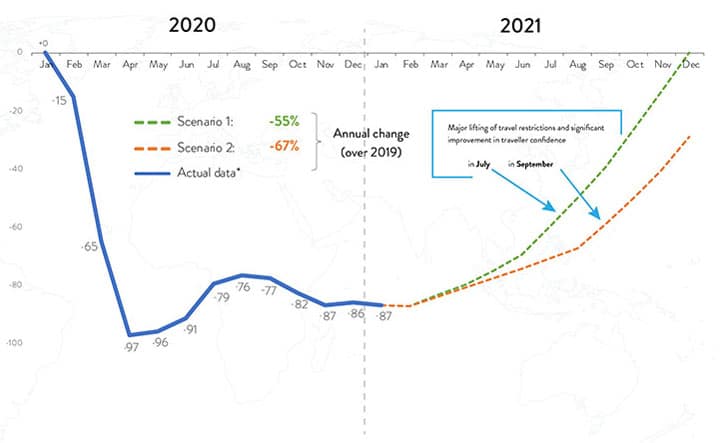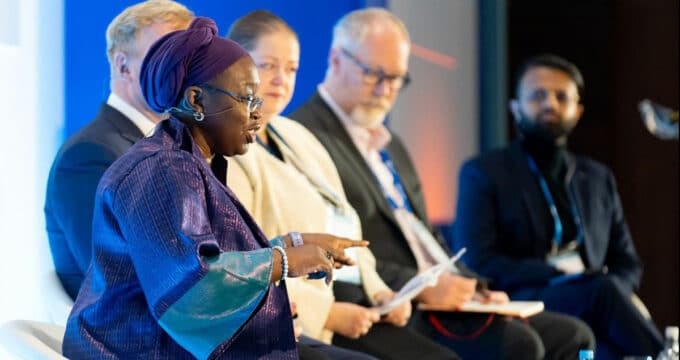World travel organisation calls for “harmonised travel and health protocols” to spur recovery in 2021
- Persistent travel restrictions and a slower-than-expected vaccine rollout has hindered the recovery of global travel in the first months of 2021
- Recovery is still projected for the second half of the year, but much will depend on the timing and progress with respect to easing travel restrictions, vaccination efforts, and the development of safe travel protocols
The severe disruption in global travel that we observed throughout much of 2020 is continuing this year. The latest tracking data from the UN World Tourism Organization (UNWTO) finds an 87% decline in international arrivals for January 2021 compared to January 2020.
The UNWTO reports that nearly a third (32%) of all global destinations remain completely closed to international tourists as of the beginning of February 2021. Largely with that in mind, the organisation projects a challenging first half of the year and is expecting an overall decline of roughly 85% for the first quarter of 2021 (compared to the same period in 2019). If that forecast holds, that would equate to a loss of 260 million international arrivals in the first months of this year.
"Mandatory testing, quarantines, and in some cases the complete closure of borders, have all hindered the resumption of international travel," says the UNWTO. "In addition, the speed and distribution of the vaccination roll-out have been slower than expected, further delaying the restart of tourism."
UNWTO Secretary-General Zurab Pololikashvili added, “2020 was the worst year on record for tourism. The international community needs to take strong and urgent action to ensure a brighter 2021. Many millions of livelihoods and businesses are depending on it. Improved coordination between countries and harmonised travel and health protocols are essential to restore confidence in tourism and allow international travel to resume safely ahead of the peak summer season in the northern hemisphere.”
Many other destinations, whether fully closed to international visitors or not, have been slow to lay down the infrastructure that the UNWTO is calling for. After being badly disrupted last year, basic visa services, notably in Canada and the US, have been slow to ramp up to previous service levels. The situation is likely to improve throughout 2021, but progress on safe arrival protocols has often been slow in many destinations as well, especially where multiple levels of (national and provincial or state) governments have been involved.
At the same time, there are serious efforts afoot to promote safe and relatively easy travel this year. Perhaps most notable among those is the European Union's fast-tracked process to establish a "Digital Green Certificate", a new type of travel credential that demonstrates the holder has been vaccinated, has received a negative COVID test result, and/or has previously recovered from the virus.
Projecting the rest of 2021
Looking ahead, the UNWTO is now working with two recovery scenarios for the balance of the year. Each scenario is based on a number of factors, notably a substantial easing of international travel restrictions, the successful implementation of large-scale vaccination programmes, and the introduction of harmonised travel protocols, such as the EU's Digital Green Certificate.
The first scenario anticipates significant progress in some of those key areas by July this year. The second, more conservative scenario assumes that progress in some of those key areas won't really take hold until September.
The following chart shows the impact of this timing factor, where the first scenario (breakthrough progress in July) would result in a 66% increase in international arrivals for 2021 compared to the "historic lows of 2020." However, even under that best-case scenario, the UNWTO cautions, the volume of global travel would still be about 55% below 2019 levels.
The second scenario (rebound in September) would lead to only a 22% year-over-year increase, which would leave the global industry roughly two-thirds (67%) below 2019 travel volumes.

For additional background, please see:
















